Will the emergence of Web3 mark the subversion of the creator economy in the centralized and advertising-based Web2? We try to first briefly describe the business model and core pain points of creators on mainstream Web2 platforms, and then prove that the arrival of Web3 will be a golden era for the creators. We hope that in the near future the technology based on Web3 will create new business and economic opportunities as a new golden era of creation.
1 Tracing the history of internet
1.1 Iteration from web1 to web3
Two most important outputs of the 21st century are code and content. Code creates powerful tools benefiting content creation. Content underpins a strong narrative and helps put more economic activities at the mercy of software tools. Both are designed to make abstract ideas actionable. According to the characteristics of different stages of the Internet era, we can mark the development process of the Internet as the era of Web 1.0, 2.0 and 3.0. The advent of the mobile internet has shifted the gatekeepers of the old media — publishers, record labels, and movie studios — where web1 controlled content creation and distribution — to creators on the web2 platform who grab consumers’ attention. During the golden decade of web2 (2005-2015), we lived in a time when ownership was concentrated in a few centralized technology platforms that had data ownership, user relationships, and the means to distribute and monetize content.
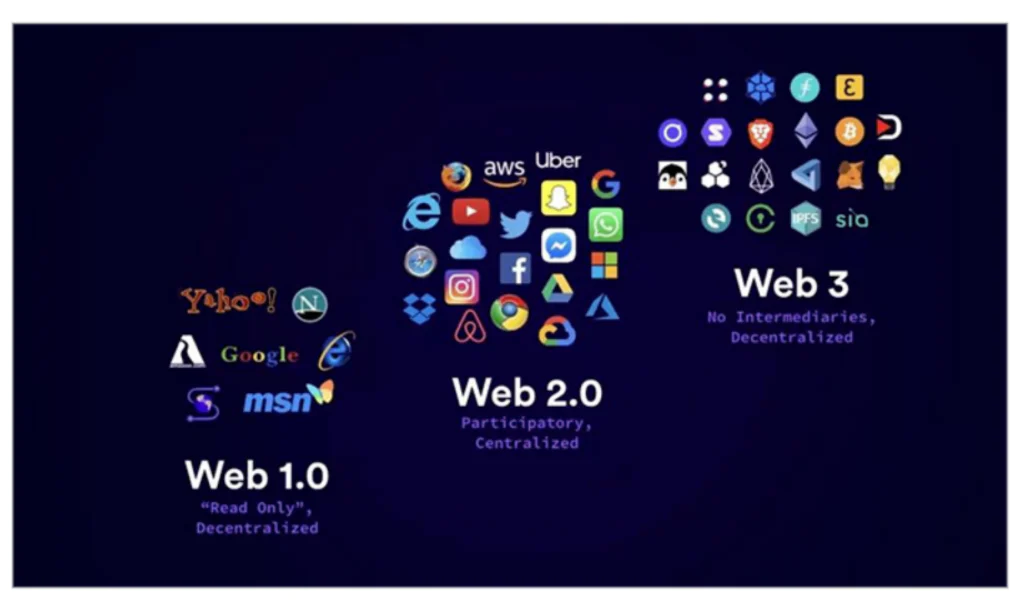
1.2 Why creator economy & creators
The digital media landscape has changed dramatically over the past decade. In China, for example, live watching time exceeds TV watching time. In the U.S., users under 25 also spend more time on Twitch and YouTube Live than on TV. The core creators of content in the web2 era, such as KOLs and celebrities, are grabbing the attention of consumers from traditional media, creating new consumption models such as content e-commerce and live broadcast e-commerce. Until 2021, the creator economy is a multi-billion dollar market with a creator community of more than 50 million, attracting more than $1.3 billion in funding. According to estimates from mediakix, the creator market will be worth between $5 billion and $10 billion over the next 5 years.
2 The creator monetization models and pain points of mainstream web2 platforms
As mentioned in SignalFire's creator economic market map, among the estimated 50 million creators, there are about 2 million full-time creators (less than 5%) and about 46.7 million amateur creators. It is necessary to emphasize that the creators in web2, who rely on mainstream social media distributing content, accumulating fans, and from sponsorship or advertising to make money, rather than trading directly with audiences (users).
We roughly divide existing creators of web2 into the following categories:
- Content consumers: Refers to the vast majority of content consumption audiences. Interactive people who consume content on a daily basis or participate in likes, comments and forwards for three consecutive times have lower content production willingness than consumption and interaction willingness (but have the potential for conversion).
- Content hobbyists: A general term for people who create content based on hobbies or part-time jobs. With various multimedia tools helping to lower the threshold for creation, anyone can publish improvised content on a centralized platform.
- Professional creators: Broadly defined as people who have specialized skills in content production and who can devote full-time jobs to making ends meet. Such creators often settle in multiple mainstream platforms and accumulate fans through content production. The monetization model mainly includes advertising monetization, platform subsidies, content e-commerce, user payment and IP authorization. They are more professional and have higher creative standards, and the platform will also dump corresponding traffic to support creators to attract more content consumers to retain.
- Head creators: generally refer to those who have deep influence or have a wide audience in certain vertical fields among professional creators. They usually have more bargaining power than platforms, and form cooperative relationships with multiple external platforms or brands, such as media companies, record companies, MCN agencies, etc.
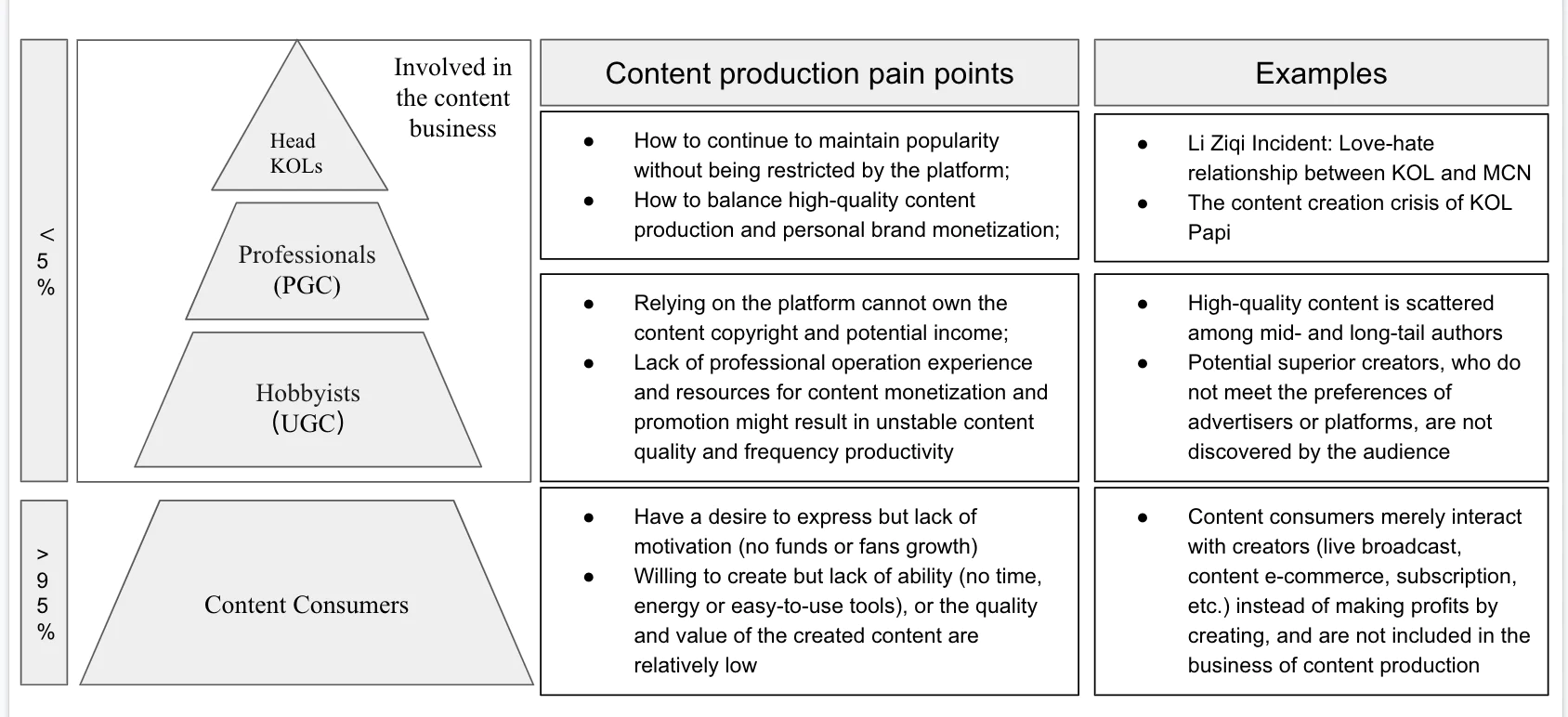
The huge scale effect brought by the Internet is destined to make web2 an era of merely several centralized platforms. This business model relies heavily on closed networks, where each platform owns its accumulated user data. As a powerful party that can determine the way of web traffic and revenue distribution, large platforms are the biggest beneficiaries, then top creators.
We conclude that the core pain points of the web2 creator economy are:
The existing cake distribution can be more reasonable: the stock creators are in the market, and the distribution of interests of all parties is not fair enough
The platform masters all user information preferences and dominates content ownership and distribution rights rather than the content creators themselves, triggering a vicious circle of unfair benefit acquisition;
KOLs have attracted the attention of a stable group of content consumers thanks to the early growth dividends, the attention of high-quality creators after a run, and continued to gain benefits beyond the value of their content production. Although there is room for substitutability and optimization in its content creation, considering the limited attention of users and the inertia of relying on information distribution, the algorithmic feedback of advertisers and centralized platforms is biased towards those creators who have already gained attention. The result is Only a handful of creators can climb to the top and make a living.
In the long term, caudal creators can only scrape by. Take YouTube as an example, most small channels are not really active and are bullied by YouTubers in a higher food chain. German researcher Mathias Bärtl proved that in 2016, the top 3% of channels received 90% of the viewership. That means 90% of YouTube creators are competing for the remaining 10% revenue.
Where is the new cake? : Achieving continuous content growth and quality enrichment requires new creators
Non-existent creators (potential consumers and small and medium-sized creators) have not been fully tapped, and have not been absorbed into the closed loop of creator ecology;
Uncreated creation has no viable business model. Influenced by advertisers and algorithm recommendations, creators are forced to seek the widest possible audience in order to create content that appeals to ads and brands. Originally fresh creative content was not produced because there was no viable business model.
Unfair distribution of rights to data information:
The opaque process of big data collection, sharing and circulation has led to frequent problems such as privacy leakage and data abuse in recent years. The distribution of data ownership essentially affects the right to use data and the subsequent distribution of benefits.
Despite the insufficient proportion of consumers who are sensitive to data rights (the “revolutionary” momentum is insufficient), there is an increasing emphasis on rights and privacy management by the general public, governments, and platforms. The centralized platform's closed management of user data is in urgent need of change.
In general, the head platform of web2 has realized the above pain points and tried to reform by introducing innovative ways. For example:
- Facebook CEO Zuckerberg announced that Instagram will build a suite of influencer tools, including a creator store, local affiliate links and a marketplace to connect influencers with brands, to capitalize on these opportunities.
- Twitter launched a super-follow feature that lets avid Twitter users charge for exclusive tweets and pay for audio chat rooms.
- TikTok has built a local marketplace to connect advertisers with creators and launched a $200 million fund to invest in its top creators.
- In addition to paying for ad revenue, YouTube has also taken the creator fund route, giving creators a $100 million fund on its product, Shorts.
It is worth mentioning that in the mature stage of web2, some new platforms try to replace giants to attract creators with more direct subscription methods and higher incentives:
- Authors of Substack, the popular subscription communication platform this year, will get 90% of the subscription revenue;
- Streamers of Twitch, a game streaming platform, can get 50% of the subscription fee;
- The creators of the content creation platform Patreon can get 88% ~ 95% of the subscription fee;
- Content subscription platform OnlyFans creators get 80% of their revenue.
Whether it is the rise of third-party monetization tool platforms or the implementation of incentives for mid-to-long-tail and emerging creators by big manufacturers, a major trend is that creators need to explore the persistent demand for "fresh and delicious cakes" from consumers. A richer and more benign content monetization path can create "more and more delicious cakes", and the traditional and single advertising monetization model needs to be broken. We see an opportunity for creators to make money by selling premium content, merchandise, coaching, consulting, and more, in addition to advertising. This lets creators focus on pleasing their biggest fans and producing more unique niche content, rather than desperately finding the largest audience possible and producing mass content.
At this time, some people may question whether the existing content ecology of web2 can complete its own iteration through a mild "decentralization" revolution? Must the empowerment of web3 create a better creator ecosystem? We try to discuss dialectically, is it a relationship of zero-sum competition or win-win coexistence?
Let's try to make a guess on this question. The self-revolution of Web2 giants is not as simple as imagined. Data about user preferences and behaviors is a platform’s most valuable asset, so big players have chosen to shut down their own ecosystems and lock users into their network effects in order to accumulate their proprietary data corpus. Since company managers are accountable to shareholders and stock prices, partial deregulation of data rights is the biggest compromise they can make. Although most users don't really care about many things about privacy and data rights, the revenue right behind data ownership is the most important thing. With the continuous iteration of technology and the iteration of the cognition of consumers and creators, the unfair distribution of data ownership will inevitably lead to the problem of unfair distribution of income rights.
In the short term, the content ecology of web2 and web3 will not be a zero-sum game situation, but more like a compatible and concurrent ecology. After all, the current penetration rate of Crypto users is much lower than that of Web2. The moderate revolution and innovative attempts of Web2 giants can be regarded as a positive incentive for web3 to accelerate its entry into user cognition. And we believe that the Web3 model brings not only a fairer distribution of content power, but more importantly, new creators who make the cake.
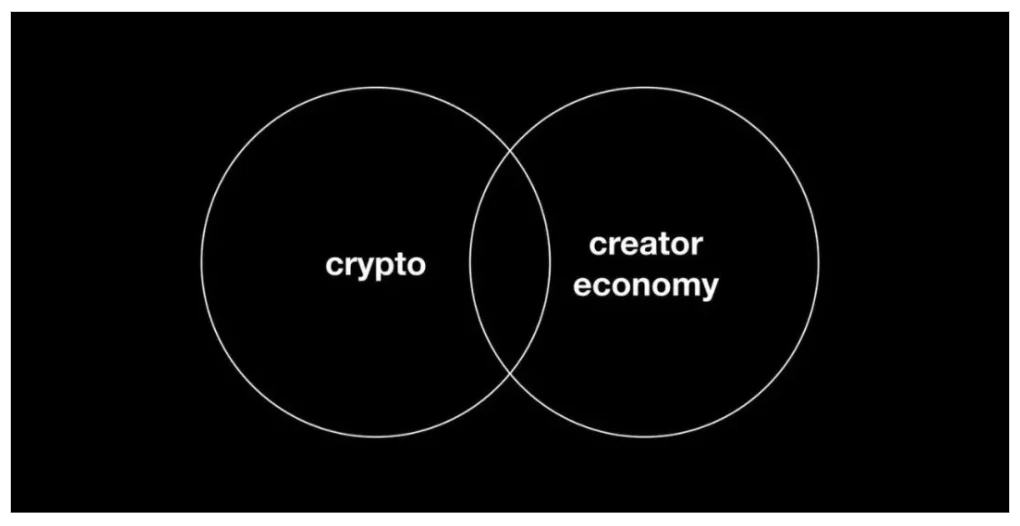
3 Where is the intersection of the creator economy and Web3?
In the second part, we discuss the issues of privacy and data collection, the incentive imbalance between platforms that rely on advertising revenue and user needs, and the lack of content innovation and creation in the Web2 era, which have led to the bottleneck of content creation and dissemination. One of the reasons why the public is excited by the arrival of Web3 is that by introducing NFTs, the power is restored to the people, and producers directly can link to consumers. In an ideal state, independent content creators will no longer be at the mercy of companies or platforms, and can publish their own original content and earn money through decentralized platforms or communities. The creator economy includes independent content creators, creative teams and planners. It also consists of community builders, as well as financial and software tools designed to help these creators make money and grow.
3.1 Web3 brings new ways of content production and consumption
In the process of tokenizing a work into an NFT, creators are able to create a verifiable on-chain record of the ownership and provenance of the work. This process will eventually mint a uniquely asset (NFT) that can be traced back to the creator. Overall, we hope to move from a world where creators need to depend on platforms to earn income, to one where they can create wealth on their own or with the community. Two of the most notable changes Web3 will bring to the creator economy are:
Changed the benefit distribution mechanism
The blockchain network itself is just a "gallery". The creator owns and retains the copyright, and can directly upload the work to the public chain to complete the commercialization, and there is no middleman to share the profits. Creators can use NFTs to create a variety of ways to pay and interact with fans.
Changed the traditional trust mechanism
In the era of web2, we rely on intellectual property law, a blunt tool, to protect creators and their copyrights. In web3, we hope to do so based on smart contracts. Digital assets have better rights protection from creation to consumption, creators will obtain reasonable distribution of benefits and content ownership rights, while avoiding various copyright prosecutions and rampant piracy and other issues.
For example, creators can issue exclusive NFTs with "sense of limitation" and "scarcity". The NFT held by a creator, as a proof of joining a DAO, can be used to express and display oneself and confirm each other's unique identity "badge". Create value in the following scenarios:
- Win the NFT issued by your favorite band, you can get the opportunity to meet and interact with the performance backstage;
- Obtain NFT as a certificate for idol kryptonite to prove your economic contribution to idol;
- When creators buy their NFTs when they are in their infancy, they can sell them at a premium after they become popular in the future, and get content investment "bonus", etc.
We imagine the future, maybe two star-chasing enthusiasts can scan each other's QR code (or in any other form) to see each other's collection of NFTs before meeting to understand his interests and contributions. Or work in a shared community - creating content, consuming content, investing in content - based on identity and content consumption concepts.
3.2 Can the new model solve the unfair allocation of interests and content rights of creators?
-
We believe that the introduction of Web3 can achieve a fairer distribution of power and more creative possibilities for platform (community) co-construction.
- Content ownership: The creator's work exists independently of the platform and is not subject to strong restrictions and restrictions on the platform.
- Community ownership: Creators and fans establish a direct communication relationship through new interactive methods. Fan groups can come from different platforms and are not distributed and distributed by the platform.
Revenue Ownership: Allows creators to mint their own creator tokens. The creator revenue model is not determined by the platform, nor does it rely solely on advertisers or sponsors, and can be defined by their own diversity.
Content will be stored in a public database. This gives creators and consumers complete flexibility in how data is used, and means that creators no longer have the same strong dependencies on a particular platform as they did in the Web2 era. For example, a decentralized incentive mechanism can reduce the cost of customer acquisition. Creators can increase user stickiness through the incentive method of issuing social tokens to loyal fans, and even allocate a part of the income rights of copyright to the community to promote the community co-creation model. Market transparency can give creators the ability to regulate the market, allowing them to truly transition from a platform-driven copyright monetization model to a self-dominated monetization model. Works created in the future may also become social portals and exhibit multi-functional attributes at different stages of the life cycle.
-
It helps to rebalance the risks and benefits of the creators economy market. “The lower the concentration of wealth, the less risk for potential competitors to poach top creators and threaten the entire business.”
- Content creators no longer need to have millions of fans or depend on the traffic protection of big platforms to make a living, and have more opportunities to survive on the funding of a few passionate people. Fans who are passionate about a creator's work will be willing to pay more for such authoritative work, allowing creators to better capture fans' willingness to pay. For example, the booming music NFT market demonstrates this effect. On streaming platforms, a piece of streaming music contributes the same amount of revenue every time it is played (on Spotify, each song is played by a paid account generates $0.004 in royalties), no matter how much fans love the singer.
- The platform does not need to spend much to manage medium and long tail content (illegal and gray-produced content) or incubate and support medium and long tail authors, and the content ecology of each community will be responsible for itself.
3.3 Can Web3 bring new creators and new creative content?
We can see that in Web3, the boundaries between fans and creators are blurring, and the nature of creators has changed significantly. Various developers and fans can be involved in the business of content creation, and are able to do more extensions based on content (such as IP re-creation, content investment and circulation, etc.). While expanding the value of existing works, it also brings more profit sharing to creators and consumers through more commercial gameplay.
Imagine that the curve of the secondary growth of creators is based on the radiation of active followers of existing channels. Take YouTube as an example:
- Full-time creators (~2M+)
YouTube: Out of 31 million channels on YouTube, about 1 million creators have more than 10,000 subscribers
Instagram: Of the 1 billion accounts on Instagram, about 500,000 have over 100,000 followers and are considered active influencers
Twitch: Of the 3 million streamers on Twitch, about 300,000 have partner or affiliate status
Others: Including musicians, podcasters, writers, illustrators and other full-time creators totaling about 200,000
- Amateur creators (~46.7M+)
YouTube: Of the 31 million channels on YouTube, about 12 million have 1-10k subscribers
Instagram: Of the 1 billion accounts on Instagram, about 30 million have 50-100,000 followers
Twitch: Of the 3 million streamers on Twitch, about 2.7 million are not in a partner or affiliate status
Other: Includes musicians, podcasters, writers, illustrators, estimated to be around 2 million in total
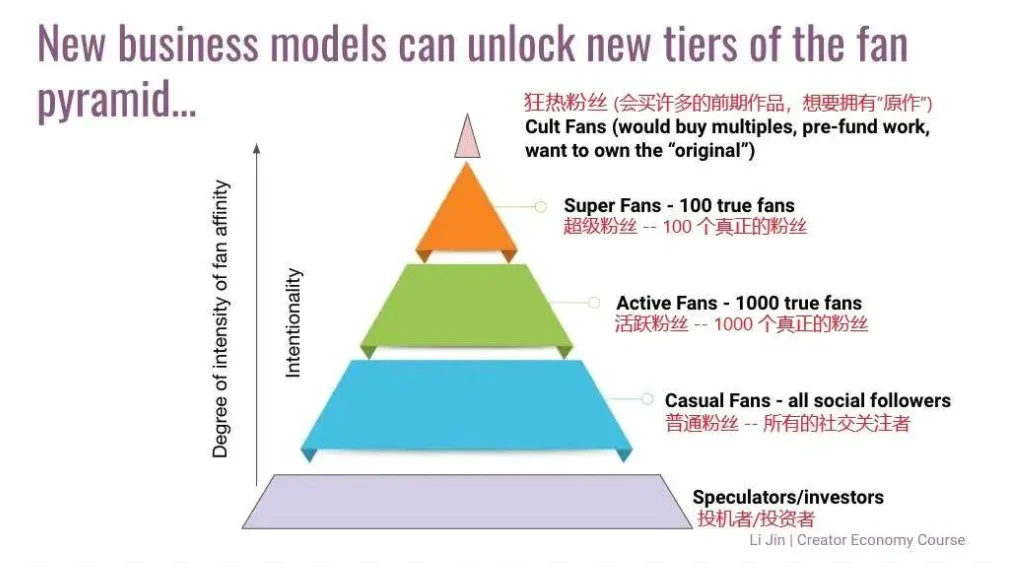
From the above model, we can reasonably expect that in the Web3 era:
- Existing creators can co-create with their fans to add new content;
- Content consumers can be included in the closed loop of production and creation and become new content creators;
- The content cycle model of creation can be enriched: content is not only consumed, but also invested.
As long as each high-quality creator radiates 10 influential fans to create collaboratively, the new creators and content will grow exponentially. This can adjust the incentive mechanism of authors and fans by introducing Tokens. One example is Shibuya, a "Web3 video platform that allows users to participate, fund, vote on results, and become owners of long-form content." The idea is that fans can buy NFTs called Producer Passes and use those NFT passes to vote on decisions about the plot and characters of animated episodes. By doing so, fans can earn a $WRAB token that represents proportional ownership of a series of NFTs.
The latest issue of The Quibbler How Web3 Impacts Creators examines the impact of Web3 on creators by comparing the different ways of getting traffic in Web 2.0 and Web 3.0. To quote a paragraph:
"The main income of creators is no longer advertising and platform subsidies, but the "money" mentioned above. This "money" is created by the creator and used to motivate the dissemination and will keep a part of it, but this "money" is not similar to the legal currency we use every day, but more like a stock: if you do more for the creator Things, such as sharing his works, making effective suggestions, etc., can get this "stock". As the creator's works become more and more popular, the probability of becoming a successful project in the future will gradually increase. If you want to More and more people will get this "stock", and the price of this "stock" will also rise, creating a more cohesive fan community in this way. Under this logic, how "stocks" operate becomes a crucial part, and thus a vertical field such as Token Economics was born. The goal is to design a system that allows "stocks" to operate healthily, which is also an evaluation of a project reliability is the most important factor. "
To sum up, the new features that Web2→Web3 brings to the creator economy:
-
New creator groups:
- Decentralize power to individuals rather than platforms. That is to weaken the intermediary, or even go to the intermediary;
- Not limited to the size of productivity, everyone has the opportunity to win corresponding benefits and attention through the dedication of interests and skills.
-
New creative content:
- New creators bring new content;
- Added creative gameplay such as digital products and virtual services.
-
Optimizing the business model of the creator economy: Based on the development of smart contracts and encryption technologies such as Defi, creators
- There are more direct and diversified realization methods;
- Create more interesting and diverse content distribution methods.
4 Various controversies about web3 creators economy
From the perspective of historical events, a large number of SocialFi projects in 2017 were short-lived (ONO, QunQun, GSC, YeeCall, NRC, SwagChain, Huoxin, and TTC Protocol were launched successively). However, due to problems such as the early encryption market, the limited number of participating users, and the limitations of the ecological model, most projects have now disappeared. In 2020, the liquidity mining model has gradually been built into a variety of ecosystems. With the blessing of DeFi, a number of mainstream SocialFi concept projects have emerged, such as Whale, Chilliz, RALLY, Fyooz, Zora and other projects.
We need to think dialectically, is the creator economy market based on web3 just a flash in the pan or a real outlet? And when and what fulfillment of the conditions will be the precursor to the outbreak?
The experience of the exponential growth wave of web2 Internet and mobile terminals data shows that once the user base of the new technology reaches 1 billion, the gravity of mass market applications will begin to emerge explosive growth.
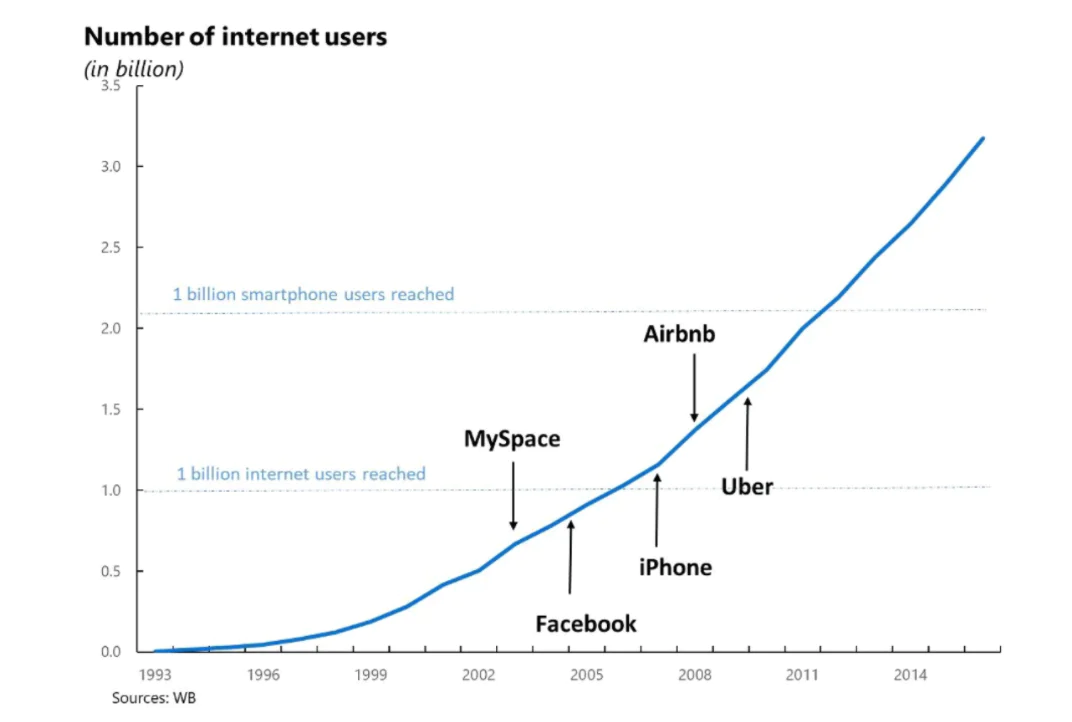
By comparison, Ethereum now has only 180 million addresses. Taking this as a proxy for the popularity of Web 3, at the current growth rate, it will take another 5 years to reach 1 billion users.
From this, we believe that the creator ecology of web3 failed to accumulate enough non-financial NFT data and behaviors and information on the chain to activate the network effect, so it did not reach the key node of the socialfi outbreak.
What are the obstacles to the realization of the combined application of Web3 and social? Will it bring new problems? For example, the ownership of content created under the legal category is not fully developed, and the trade-off between decentralization and centralized platforms are worthy of our vigilance.
At present, SocialFi is in the early stage of development. Most of the ecological participants are mainly based on social tokens (Social Token) for concept divergence and technical update. There are intersections with other concepts. Analysis around the development of creator economy:
From the perspectives of original content and IP creation, content storage and distribution technology construction, community communication and audience interaction, and business realization, we are more optimistic about tool-type products in vertical industry for users migrating from web2 to web3 , such as companies that support creation or monetization. For example, starting a paid blogging business requires signing up for Substack, writing with Google Docs, making (beautiful) graphics with Figma, registering a collection account with Stripe Atlas, setting up a bank account with Mercury, recording and editing podcasts on Descript, Post on Anchor and promote it on Twitter. Together, these companies focus on helping creators create, grow, manage and monetize their audiences. This is very important, and the necessary tool for individual creators to enter the business closed loop lies in their ability to build user relationships and distribute content, and earn revenue along the way.
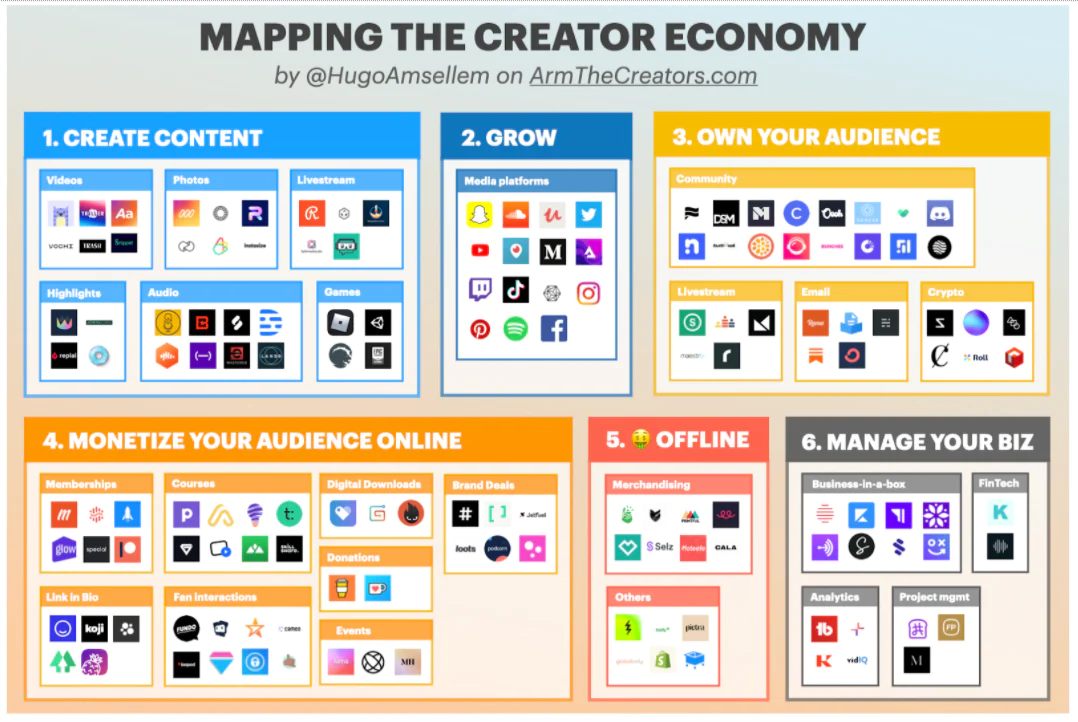
CONCLUSION
In the golden decade of the mobile internet, we lived in a time when ownership was concentrated in a few centralized technology platforms that owned data, end-user relationships, and the means to distribute and monetize content. While content creation has exploded during this period, it has also led to the overwhelming majority of creators' reliance on centralized platforms, the dilemma of the information cocoon, and the burnout of innovative creation.
The root cause of inequality in the creator field is the excessive control that platforms exert over creators and their works through ownership of production methods and content distribution. The most direct way to challenge this control is to change who owns the means of production. Fortunately, we're seeing the emergence of web3 that may shift the balance of power in favor of creators.
The creator ecology of Web3 has begun to take shape, whether it is relying on the blockchain, the underlying economic system of NFT, or the self-built currency system within the platform. Creators can use ecological tools to complete content production, and realize revenue realization through platforms, trading markets, communities and other channels. However, which innovations can truly provide value to creators requires a long search and trial and error. We believe that web3 has the potential to bring incredible opportunities to everyone who contributes and creates on the Internet: this is the golden age of true content creation we've been waiting for. Quoting the speech of the founder of the IPFS protocol at the DLD International Conference,
"Web 3.0 will be (implemented) in the next few years, if you want to set a time, 5 or 10 years, but now the Web 3.0 movement has begun. “
Works Cited
https://li.substack.com/p/the-web3-renaissance-a-golden-age?s=r
https://www.hongruimy.com/a/54124
https://news.sina.com.tw/article/20211116/40574954.html
https://mirror.xyz/justinemoore.eth/nn6BBrdywYLEKMqiSdDH2Qzq6USTZPsQBzIiQeFLUpc
https://mirror.xyz/bitwhalecapital.eth/q97NEE-_Wb3J2w99X7MRCgZKXpFIt1wO9BZIyJHxsR8
https://mirror.xyz/0xyuwei.eth/sQWucMVt6h3xJg3rjhKL0SqJvb_ekx2bxqA6tpAiVFk
https://www.zvstus.com/article/news/1/75d87ffffe8325ceff242fbb55b20000.html
https://www.zvstus.com/article/news/1/75d87ffffe808dc014919b1e2bba0000.html
https://stratechery.com/aggregation-theory/
https://future.a16z.com/creator-economy-levels/
https://geekplux.com/newsletters/7
https://www.36kr.com/p/1499719964048257
https://m.bimama.com/news/9986.html
_Wb3J2w99X7MRCgZKXpFIt1wO9BZIyJHxsR8
https://kk.org/thetechnium/1000-true-fans/
https://www.tubics.com/blog/number-of-youtube-channels
http://jiangngyjf.com/火币下载官网/832.html